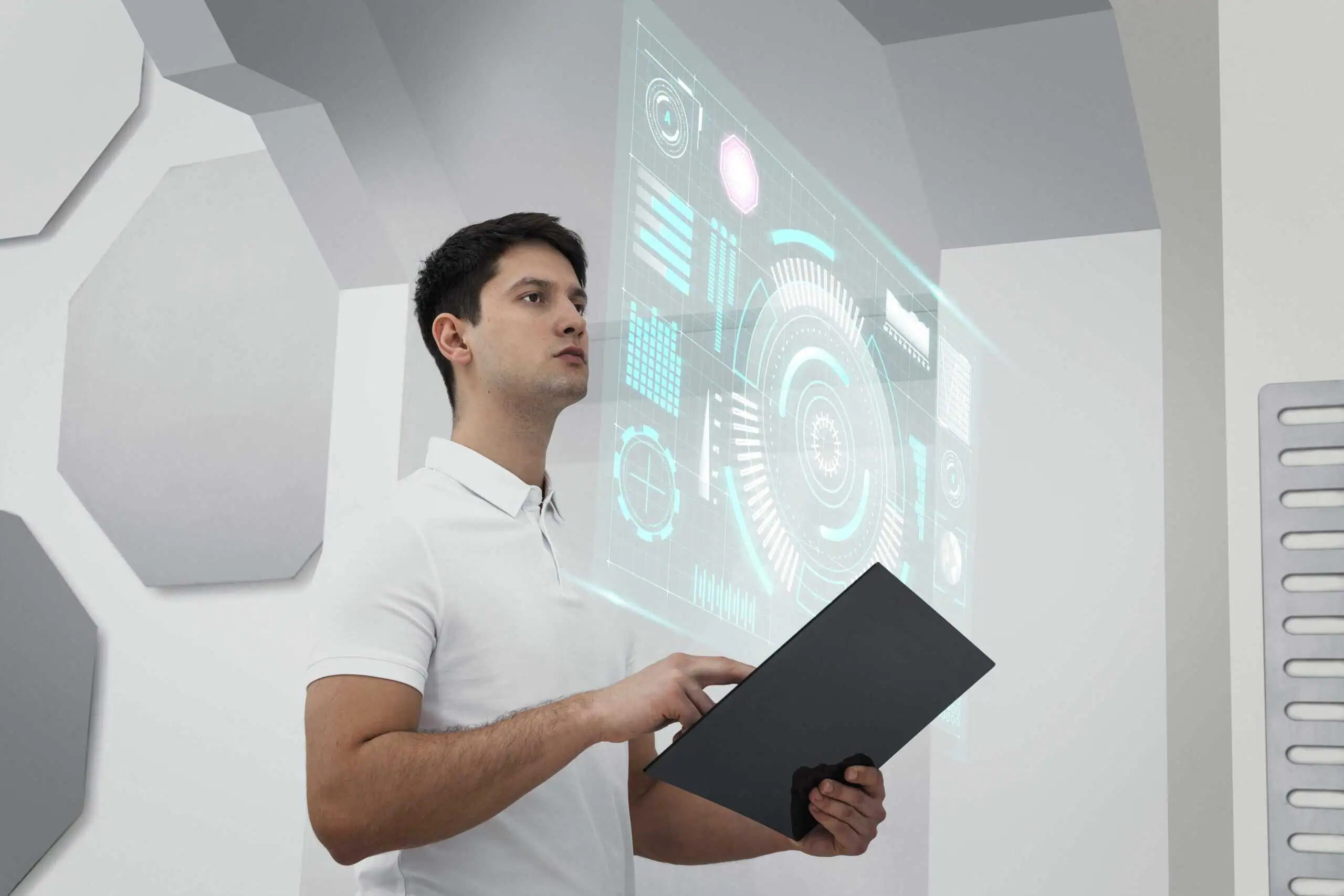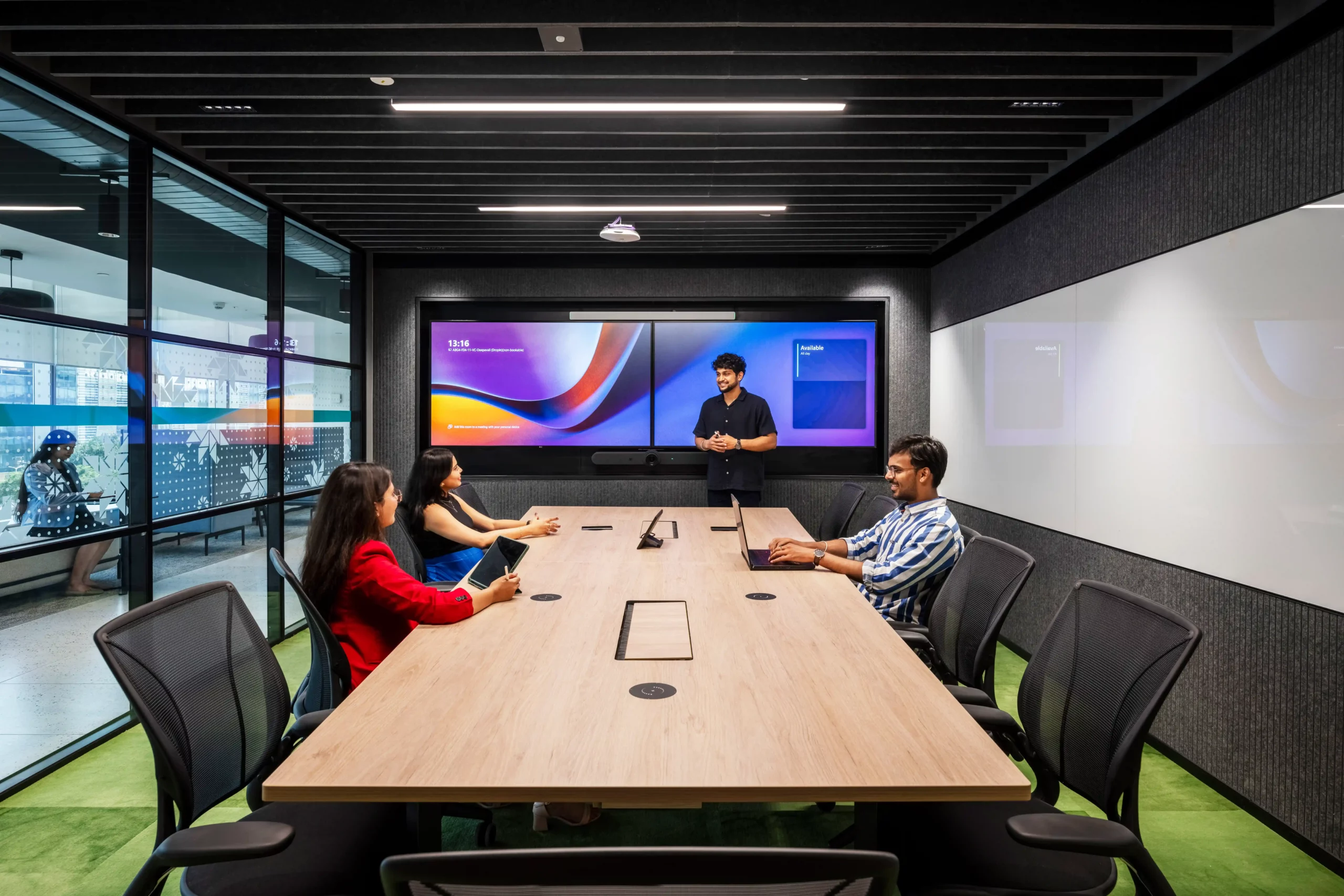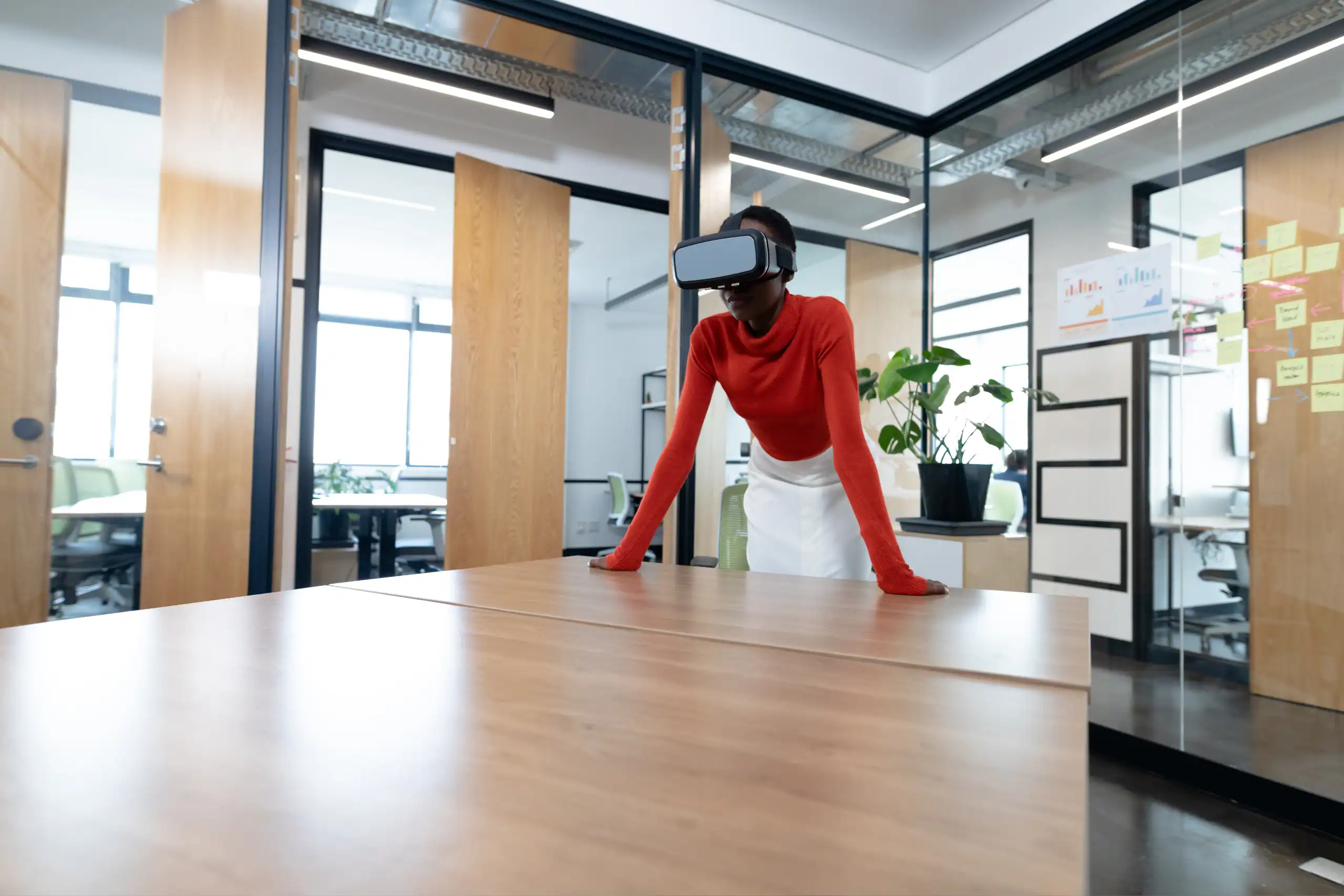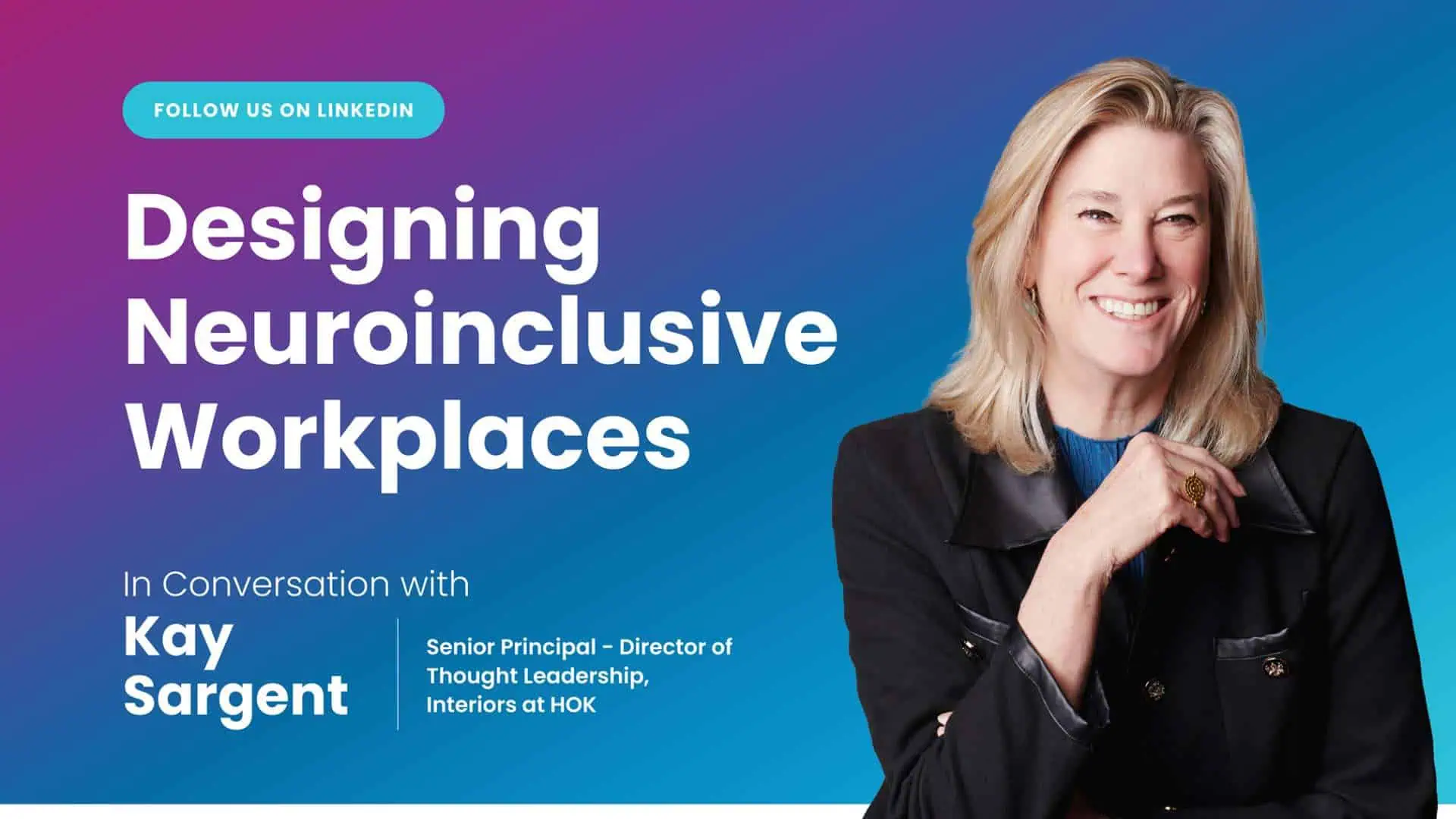Post-pandemic the usage and recalibration of our workplaces to accommodate technology has been extensive. Many companies shifted to remote and hybrid work while adjusting to new challenges posed by the pandemic. Technology has played a critical role in enabling companies and transforming workplaces to maintain productivity and collaboration during this time.
The hybrid workplace turned out to be a much sought-after work environment that combined elements of both remote and in-office work. It allowed employees to work from home or other remote locations some of the time, while also coming into the office for meetings or to work on specific projects. Since then, hybrid workplaces continue to use a variety of technologies, including video conferencing, collaboration software, and cloud-based tools that allow employees to access company resources and communicate with their colleagues regardless of location.
Workplace Automation
A modern technological workplace is a work environment that makes extensive use of technology to facilitate communication, collaboration, and productivity. The workplace of today is a buzz with the latest technology and we have adopted its performance and seamlessness that it now seems almost impossible to live or work without it. A huge trend to emerge out of this interdependence is automation.
Workplace automation refers to the use of technology to perform tasks or processes without the need for human intervention. The widespread use of automation in almost every industry takes over repetitive and mundane everyday tasks, letting us humans take over the creative process of innovation completely and uninterrupted.
The advantages of the use of automation in the workplace are profound. It can greatly improve efficiency in the workplace by enabling tasks to be completed faster and more accurately than they could be by humans, given the fact that they do not need breaks, neither get tired nor make mistakes. Automation can also help to reduce the time and effort required to train new employees, as they do not need to learn how to perform certain tasks manually. In addition, it can reduce the need for manual labour, allowing employees to focus on higher-level tasks that require more skill and expertise. We can safely conclude that ‘no, robots aren’t going to replace humans’.
According to industry specifics, workplace automation technologies includes but is not limited to:
- Robotic Process Automation (RPA): software that is programmed to perform tasks such as data entry, processing transactions, and responding to customer inquiries.
- Artificial Intelligence (AI): technology that enables systems to perform tasks that would normally require human intelligence, such as decision-making, language translation, and image recognition.
- Machine Learning: a type of AI that enables systems to learn and improve over time, without being explicitly programmed.
- Industrial Robots: physical robots that are used in manufacturing and other industries to perform tasks such as welding, assembly, and painting.
- 3D Printing: a manufacturing process that uses a printer to create physical objects by layering materials such as plastic or metal.
- Supply Chain Automation: the use of technology to automate and optimize the movement of goods and materials through the supply chain.
- Project Management Software: tools that help teams to plan, execute, and track projects, including tasks such as scheduling, budgeting, and resource allocation.
- Smart Building Technologies: systems that use sensors, automation, and data analysis to improve the performance and efficiency of buildings – the derivative of ‘Smart Spaces’ (to be covered in detail in part 2 of this blog).
Besides the obvious advantages of improved and accelerated business capability and growth, the use of automation has several advantages, such as:
- Increased efficiency and productivity
- Improved accuracy and reduced errors
- Enhanced consistency and standardization
- Improved work conditions and reduced workload for employees
- Increased flexibility and adaptability to changing business needs
- Reduced operational costs and increased profitability
- Better data management and analysis capabilities
- Improved customer experience and satisfaction
Hyperautomation:
Hyperautomation is a term used to describe the use of advanced technologies, such as AI and machine Learning (ML), to automate processes and tasks. It involves the use of multiple tools and technologies to automate as much of a process as possible, with the goal of increasing efficiency and reducing the need for human intervention. In practice, hyperautomation involves the use of advanced technologies, such as AI and ML, to automate tasks that were previously performed by humans, such as data entry, report generation, and customer service. In addition to automating routine tasks, hyperautomation also enables organizations to discover new opportunities for optimization and process improvement.
Hyperautomation can lead to a number of benefits, including:
- Increased Efficiency: By automating routine tasks, hyperautomation can free up employees to focus on more strategic and creative work.
- Improved Accuracy: Hyperautomation can help eliminate human error and improve the accuracy of business processes.
- Increased Speed: Hyperautomation can help organizations complete tasks faster, leading to improved overall performance and reduced cycle times.
- Improved Decision-making: Hyperautomation can provide real-time data and insights to support better decision-making.
Hyperautomation is still in its early stages of adoption and is expected to become more widespread as organizations continue to adopt and integrate new technologies into their operations. It requires a significant investment in technology and a strong understanding of the underlying technologies, as well as a well-defined strategy and plan for implementation.
Automation: The Future is Only Machines?
It is true that automation is having a significant impact on the future of work. As more tasks and processes become automated, it is likely that some jobs will become obsolete, while others will evolve and require new skills. For example, automation is already being used in many industries to perform tasks such as data entry, customer service, and manufacturing, which were previously done by humans. This has led to concerns about job loss and the need for workers to adapt and learn new skills to remain employable.
On the other hand, automation can also create new job opportunities in areas such as programming, data analysis, and system design. As automation becomes more widespread, it is important for individuals and society as a whole to be prepared for these changes and to ensure that the benefits of automation are shared fairly. This may involve providing education and training opportunities to help workers adapt to new roles, and developing policies to support those who are affected by automation-related job loss.
Automation or the use of AI has been disruptive and has augmented work and how we perform work. Automation can be either beneficial or bleak (a never-ending debate) depending on how it is viewed, and so it is important to consider the potential consequences of automation and ensure that it is implemented in a responsible manner. And what has risen from that responsibility with a focus on workplace automation is making buildings smart to improve people’s lives while maintaining the delicate balance of work-life as well as facilitating an organisation’s business growth and potential. Part 2 of this blog covers those nuances and steps that accelerate collaboration between people and the physical workplace giving way to ‘smart spaces’.
Related Read:
Must-Have Technologies to Create a Healthy Workplace for IT Companies
Technology at Workplaces- The Beginning of a Convenient Future








